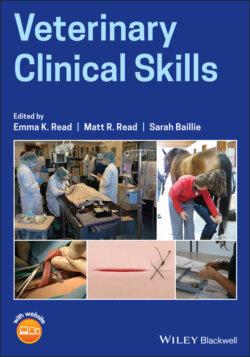Читать книгу Veterinary Clinical Skills - Группа авторов - Страница 31
Time
ОглавлениеTime is often one of the most precious resources and includes the time required for the students, as well as the time of the teachers, including faculty and staff (Schneiderhan et al., 2018). The amount of time reported for teaching clinical skills in veterinary curricula is highly variable. For example, at the University of Minnesota, laboratory training (including nonclinical skills training) comprises 13–15% of the curriculum depending on the student's track (Malone, 2019). Others report having had to cut core laboratory hours and replace these with optional sessions (Carroll et al., 2016). In contrast, another program reported reducing didactic content in years 1 and 2 by 25%, which enabled them to add clinical practical courses focused on fundamental clinical skills (Morin et al., 2020). Similarly, the University of Calgary, with a very strong emphasis on clinical skills training, reports 20% of the curriculum devoted to skills training (Read and Hecker, 2013). Regardless of the time allocated in a program to teach these skills, it is often necessary to have creative and efficient training of clinically appropriate knowledge and skills given the constraints on available time in the curriculum (Thomson et al., 2019).
An additional consideration when allocating time for a clinical skills curriculum is how students should progress. Most professional programs move students through training programs as cohorts in a time‐based manner. However, students enter a professional curriculum with vastly different backgrounds, experiences, innate abilities, and interests. Conversely, students may leave a program with a different set of skills depending on their rate of learning and their area of interest (e.g. track). Does it make sense to assume students should progress at the same speed and need the same learning opportunities, particularly with the high cost of laboratory teaching (Malone, 2019)?
The corollary to this concept is a curriculum that focuses on competency (i.e. time independent), which is one of the fundamental tenets of competency‐based medical curricula (ten Cate et al., 2018). However, given the current administrative restrictions for veterinary programs, this could be difficult to achieve for individual students. A possible alternative would be to offer those students demonstrating proficiency in a given core set of skills opportunities to learn additional, more advanced skills and for these to be acknowledged through a portfolio or “badging” system and which could be used to enhance employability. This approach could be utilized in earlier years of the curriculum, as well as during the clinical years.
